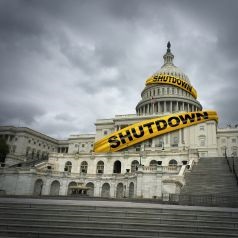<iframe style="width:120px;height:240px;" marginwidth="0" marginheight="0" scrolling="no" frameborder="0" src="//ws-na.amazon-adsystem.com/widgets/q?ServiceVersion=20070822&OneJS=1&Operation=GetAdHtml&MarketPlace=US&source=ss&ref=as_ss_li_til&ad_type=product_link&tracking_id=peaceinvesting-20&language=en_US&marketplace=amazon®ion=US&placement=0060555661&asins=0060555661&linkId=80f8e3b229e4b6fdde8abb238ddd5f6e&show_border=true&link_opens_in_new_window=true"></iframe>|<iframe style="width:120px;height:240px;" marginwidth="0" marginheight="0" scrolling="no" frameborder="0" src="//ws-na.amazon-adsystem.com/widgets/q?ServiceVersion=20070822&OneJS=1&Operation=GetAdHtml&MarketPlace=US&source=ss&ref=as_ss_li_til&ad_type=product_link&tracking_id=peaceinvesting-20&language=en_US&marketplace=amazon®ion=US&placement=1119404509&asins=1119404509&linkId=0beba130446bb217ea2d9cfdcf3b846b&show_border=true&link_opens_in_new_window=true"></iframe>|<iframe style="width:120px;height:240px;" marginwidth="0" marginheight="0" scrolling="no" frameborder="0" src="//ws-na.amazon-adsystem.com/widgets/q?ServiceVersion=20070822&OneJS=1&Operation=GetAdHtml&MarketPlace=US&source=ss&ref=as_ss_li_til&ad_type=product_link&tracking_id=peaceinvesting-20&language=en_US&marketplace=amazon®ion=US&placement=1119376629&asins=1119376629&linkId=2f1e6ff64e783437104d091faaedfec7&show_border=true&link_opens_in_new_window=true"></iframe>

By Dr. Charles Patterson, WCI Columnist
Casual readers of the news will note a now common headline: “Government Shutdown Looming.” As of this writing, approximately 88 days have passed since the December 2023 stop-gap measure was passed to fund the federal government through mid-January (and a portion of February) of 2024, and it's been 26 days since ANOTHER continuing resolution was passed to fund the government through the beginning of March.
While these measures are hailed as successes of bipartisan teamwork, such sentiments fail to acknowledge the stress and anxiety churned within the federal workforce—military, contract, and service-adjacent physicians among them. As we approach our next funding deadline a couple of weeks from today's publication, we should discuss the history of shutdowns, their impact, and what to do if you find yourself between the canyon walls of patient care without a paycheck and at the whims of Congress.
Not unlike union strikes, government shutdowns are an extreme tactic employed to exact concessions from an opposing bedfellow. I will happily defer discussions on the moral validity of this strategy to wiser minds than my own, opting instead to focus our attention on how to successfully tread water with the groups caught in the middle (i.e., the bargaining chips).
The United States government has undergone 22 funding gaps since 1974, and it has shut down 10 times since 1980. These shutdowns have lasted anywhere from hours to as long as 35 days, and they have notably occurred with a diverse mix of parties in the White House, Senate, and Congress. Ten shutdowns in 43 years may not seem like enough to cause a significant perturbance. But consider that nearly one-third have happened in the last 10 years and that the many, many more “threatened” shutdowns such as those in the last several months are not accounted for. In sum, preparing for shutdowns and the related gaps in funding have become par for the course for government employees and military docs.
The real and visceral impact of pay gaps is easily appreciated. For the young and still establishing members of the Armed Forces, Department of Defense (DoD) contractors, and employees, living paycheck to paycheck is not compatible in the face of a prolonged pause in income. Even for those of us seasoned enough to have emergency funds in place just for this purpose, each threatened shutdown is an exercise in battening down the [cashflow] hatches.
Since my first oath of office in 2007, I’ve seen more than a half-dozen threatened and multiple full government shutdowns. For military physicians and professionals (who are among the highest earners in the DoD), these periods are a frustrating inconvenience. As life has evolved, our family has grown and savings have matured, and these periods have grown more troubling for our people than for ourselves. Experience (and a little bit of saltiness) is an excellent teacher of a pragmatic faith. Things will get sorted, and it will be fine. For those new to this process, however, a lack of preparedness is a recipe for toxic stress.
In the weeks prior to the funding deadline, there is typically an email or command meeting which notifies us that, in the event of a shutdown, we are still to show up to work. Yes, that is correct, members of the Armed Forces become unpaid but fully working employees. Back pay is typically assured (though not always for our furloughed or contracted colleagues), but the job must be done regardless of a pay slip. This can make moonlighting or off-duty employment somewhat sticky. For those in training pipelines where moonlighting is not allowed, the ability to supplement income may be severely diminished. And because government shutdowns are not deemed to cause irreparable damage to those they impact most, they remain a fact of life for federal employees.
In the following paragraphs, we will explore several approaches to funding gaps and government shutdowns. Many of these concepts will be grossly applicable to employees of private groups or non-federal institutions, and they are meant to cultivate a mindset of preparedness. We preach about income loss as a hypothetical, but as the pandemic has proven, it can happen to those of us with even the “safest” jobs. Thankfully, there are real solutions that should be considered well before they are needed.
How to Prepare for a Government Shutdown
The first step in preparation for a government shutdown is to accept the reality of a periodic pay disruption. Regardless of the bellyaching and in spite of lamenting government dysfunction, the specter of a shutdown is now part and parcel of the military and federal employee experience. Pragmatic actions to prepare include the following:
#1 Establish and Maintain an Emergency Fund
I recommend six months of expenses in your emergency fund. Sure, the longest shutdown we’ve seen thus far has been a little over one month, but past performance is no guarantee of future resolution. While I truly believe it's in all parties’ best interest to pass a budget quickly, there is a precedent for prolonged holdouts. More importantly, however, periods of income loss are the highest risk for unforeseen expenses. Fender-benders, water heater failures, and last-minute trips to ailing relatives are all part of the human experience that Murphy’s Law dictates will happen when your income is on pause.
Now, I will concede that six months of cash isn’t palatable. Putting that in a mix of CDs, money market funds, or high-yield savings accounts is a great way to defray the cash drag while keeping those reserves somewhat liquid.
#2 Establish Moonlighting Agreements
Moonlighting is an excellent way to shield your war chest in the event of a primary income failure. While this is command- and time-dependent, it offers flexibility in your financial life that takes the pressure off of circumstances that are otherwise out of your control. If you are a trainee or stationed in a place or with a command that does not allow for moonlighting, this obviously won’t be an avenue for you. Remember, military physicians still have to report to work during shutdowns. Requesting military leave to use for moonlighting prior to budget deadlines may allow you to claw back these transient shortfalls.
#3 Know Your Resources

What is your plan A, B, and C for a protracted shutdown? Knowing how on-base services such as childcare, healthcare, and commissary are affected may impact the depth of your planning. It would behoove you to work through what alternative resources will be available. Beyond MilitaryOneSource, the unit First Sergeant, and the Family Readiness Center, location-specific community resources are typically in place and are, in my experience, eager to help military families
#4 Identify Cashflow Strategies
Taking stock of what expenses would disappear in the event of a shutdown will help preserve the precious and limited resources in your emergency fund. Cutting off the dining-out budget, delaying travel plans, and even belaying charity-giving are low-hanging fruit. Gary, your child’s swim coach, may have to pound sand for a month while the Defence Finance and Accounting Service gets replenished. And if he kicks your kid off the team, then it looks like you just saved yourself a lot more money!
These are fine temporary cost-saving measures, but they probably won’t move the needle much for the already budget-conscious. If there were ever another great reason for paying off a 30-year mortgage in a 15-year fashion, it would be that, in the case of a shutdown, you can find another $1,000 or more by making only the 30-year PITI payment.
More information here:
The Moderate-Income Physician
Purchasing a Home While on Active Duty
Further Contingency Planning
Other resources often become available when these shutdowns occur. Financial institutions such as USAA have offered interest-free loans to replace income for a limited period of time. Now, these debts are callable immediately upon government funding but are a reasonable extra buffer between a shutdown and your emergency fund. Lines of credit, cash advances, and personal loans are theoretically possible, but they are generally not advisable. Better that Gary the swim coach get an “I-owe-you” than for your family to accrue high-interest debt.
More information here:
Should Doctors Be Organizing and Striking for Better Pay and Work Conditions?
This Too Shall Pass
Government shutdowns happen, and they will continue to happen. There has yet to be a shutdown that forfeited a servicemember’s pay completely, and it would be politically unpopular not to repay what is owed. With just a little bit of planning, military white coat investors should have the ability to navigate shutdowns with relative ease. That being said, the price isn’t just monetary. With children to feed, a mortgage to be paid, and Gary the swim coach to be kept quiet, the anxiety that accompanies the build-up to a funding deadline is real. I get squeamish as budget deadlines approach amid legislative deadlock. It's times like these that turn my eyes to side gigs, times like these that place emphasis and (immeasurable) value on financial independence.
In reality, though, I am most anxious for the young sailors, the young airmen, and the young soldiers who have families of their own to feed. We are lucky to have a moderate physician income and a community like The White Coat Investor through which we have internalized the basics of financial literacy. Time and a robust savings rate have helped. But young folks, many of whom lack both financial literacy and all but a meager savings rate, are particularly vulnerable to these shutdowns. There are certainly physicians (here’s looking at you, trainees) who fall into this group and who would benefit from planning for the income disruption caused by yet another government shutdown.
The views expressed in this article are those of the author and do not reflect any official position of the Department of Defense or the US government. These writings are not authorized, approved, or endorsed by any of the above entities.
If you're a military doc, how have you prepared for government shutdowns? Have they been a burden to you? What other tips do you have to weather these storms? Comment below!
The post How Physicians Are Affected When a Government Shutdown Is Looming appeared first on The White Coat Investor - Investing & Personal Finance for Doctors.
||
----------------------------
By: Josh Katzowitz
Title: How Physicians Are Affected When a Government Shutdown Is Looming
Sourced From: www.whitecoatinvestor.com/physicians-government-shutdown/
Published Date: Tue, 13 Feb 2024 07:30:04 +0000
Read More
.png) InvestingStocksToolsClubsVideosPrivacy PolicyTerms And Conditions
InvestingStocksToolsClubsVideosPrivacy PolicyTerms And Conditions
